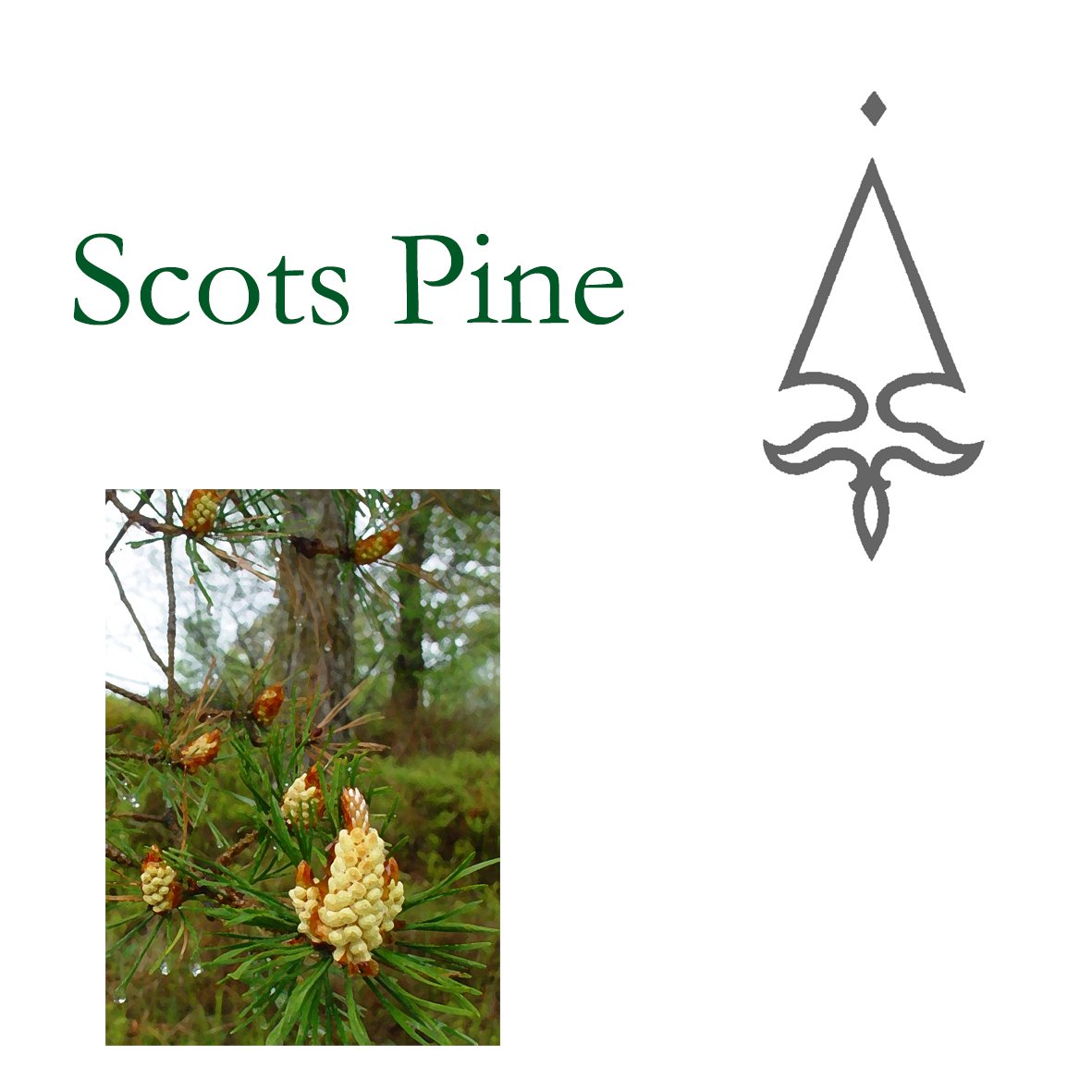SCOTS PINE (Pinus sylvestris)
Key: Insight
The Scots pine is a pioneer tree that survives well on poor or sandy soil because they have many mycorhizal fungi that provide nutrients and minerals particularly phosphorus. These fungi may also help the tree against pathogens, in exchange getting organic compounds and sugars from the tree. There are many different forms of Scots pine but those most planted are the tall, straight forms. Although native in the Scottish Highlands Scots pine was only re-introduced into England around 1660 when they were planted in North Hampshire. From there it quickly spread over the heathlands of Berkshire and Surrey. Until replaced by American softwoods Scots pine was the main forestry tree, its wood, oil and extracts providing many different products.
Scots pine flowers in May and June producing huge amounts of pollen (second only to elm). The red-pink female flowers appear at the tip of the most vigorous growing shoots. These, when fertilised, will ripen over the next three seasons, releasing the wing-like seeds as the cones are alternately wetted and dried. The male flowers are bright yellow and cluster around slower growing shoots.
The pyramidal young trees lose their lower branches as they mature eventually taking on the familiar flat and spreading crown on a long bare trunk. They can grow to 120ft (36m) and live for not much more than 150 years.
The activity of Scots pine focuses on the upper parts of the body. At a physical level the essence can help create calm and relaxation in the chest areas, both relaxing and clearing the lungs, easing breathing and reducing stress from the heart.
It is a cleansing, clearing energy that can help release blockages anywhere in the system. Boundaries are both repaired and maintained, so that individual integrity is enhanced without blocking out energy or information from other sources.
As the boundaries become more secure the heart is opened and calmed and the brow chakra can become greatly energised. This enables a clearer perception of fine levels of energy such as auric and clairvoyant sight. The perception of nature and the kingdoms of nature, especially nature spirits, are made more accessible. But clarity of the brow chakra also functions at the mundane, or anyway less spectacular, levels of seeing. Thus there is a clarity of understanding -- “seeing” at every level, and this means that meditative states are easier to maintain and tend to be more profound. Scots pine brings a penetrating insight and allows a balanced growth of individual gifts. It increases tenacity and patience with the ability to see the broader aspects of good and bad. With this, too, comes forgiveness.
Scots pine effectively grounds excess energy and ensures a practical development of this mental clarity, avoiding a top-heavy build-up in the body.
Signature: Though rooted in the soil the usual focus of many pine trees is at the top of the tree, as the essence focuses at the top of the head.
Comment: Many of the Caledonian pines have significantly longer limbs branching at lower levels, greatly changing the familiar visual appearance of most of the English pines. They have a greater weight, gravity and sense of presence. Unfortunately, few areas now have these original stands and natural regeneration is largely prevented by the widespread grazing of deer herds.
Edward Bach used a boiled preparation of the male and female flowers to clear guilt, the sense of blame and the failure to live up to one’s expectations. It clears emotional confusion caused by an unclear understanding of the situation.
All pines give a resin by tapping the trees. It is used for making turpentine and rosin. The impure resin is tar produced especially from the roots, it has been used as an antiseptic and stimulant. The essential oil is produced by distillation of the wood by steam under pressure. Pine is a rubefactient, diuretic and irritant. It has been used for bladder, kidney and rheumatic problems and for clearing the mucous membranes of the respiratory system. Recently, a bark extract, pycnogenal, has been found to be the most effective remover of antioxidants and free radicals from the body.

